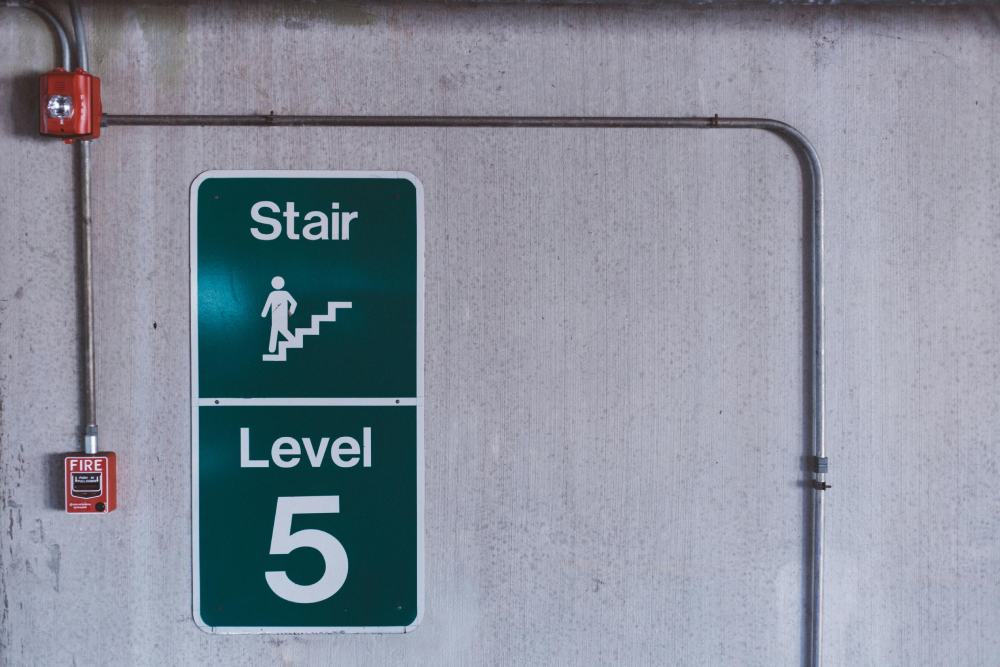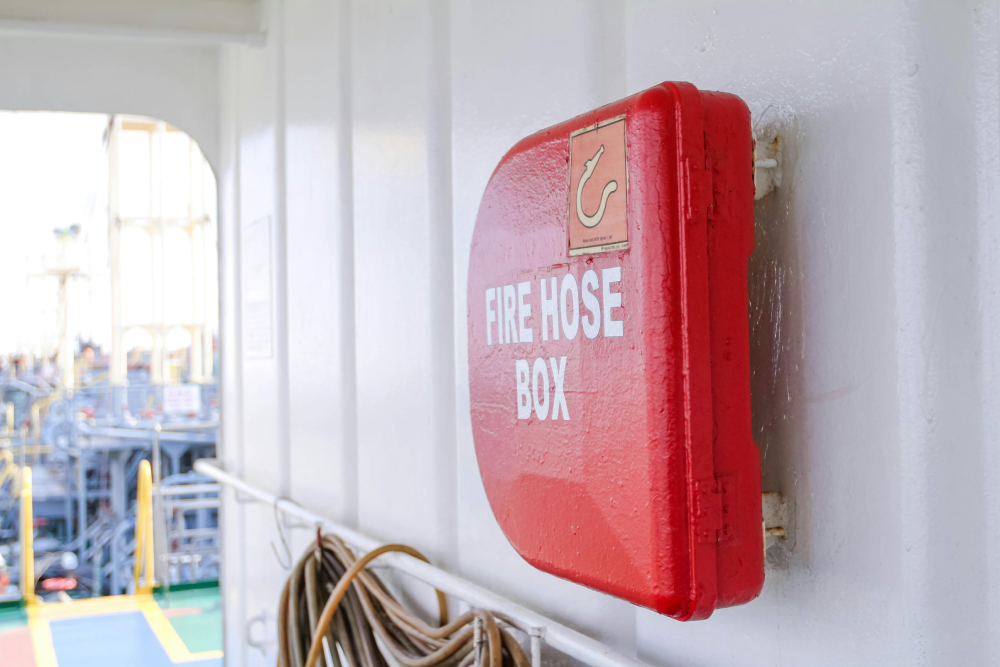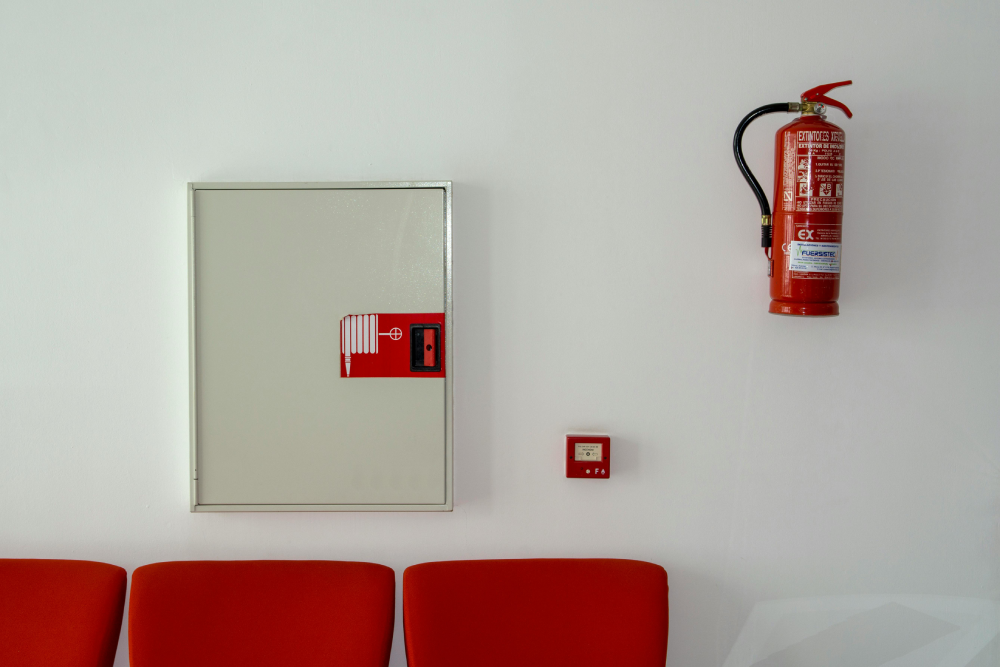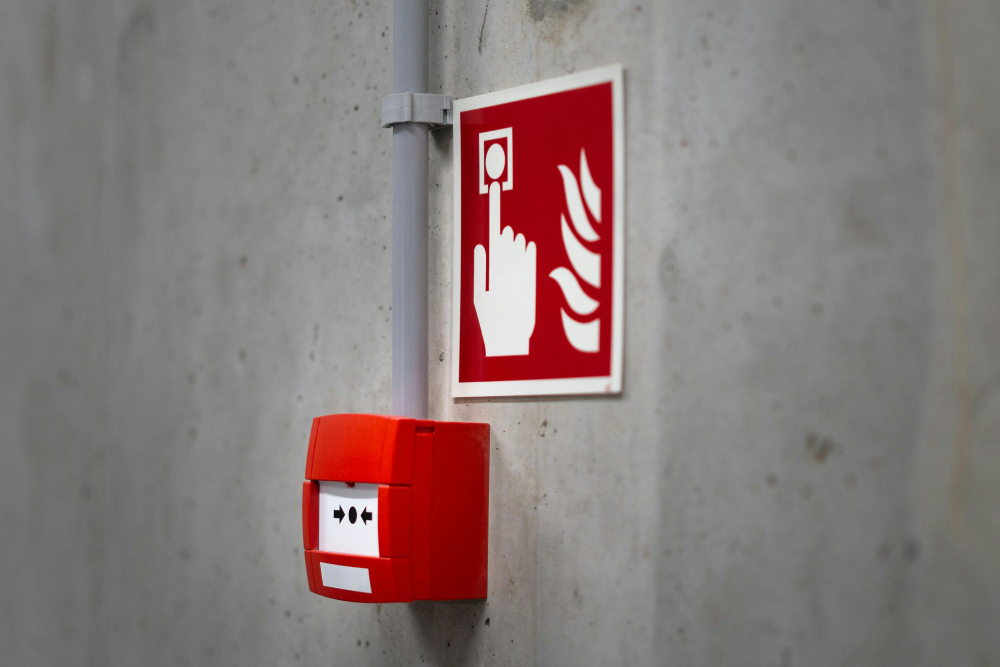Fire safety in the built environment is going through some big changes. If you’re a contractor or service provider working in fire and security, staying up to date with shifting regulations isn’t just about staying compliant. It’s about keeping people safe, protecting property, and building trust with your clients.
At the Fire Conference 2025, a clear message came through — the industry is moving towards a more proactive and thorough approach to compliance, risk assessment, and building safety. A major part of that shift is the newly updated BS 9991:2024. This revision to the fire safety code for residential buildings is more than a technical update. It’s driving real change in how systems are installed, maintained, and monitored across the UK and Ireland.
For businesses, that raises a familiar challenge: how do you stay compliant with tougher rules without letting the admin slow you down or disrupt your service? The key is getting a handle on what’s changing and making sure your teams have the right tools in place to manage it all smoothly.
Here’s what you’ll learn in this guide:
- Why Fire Safety Standards Matter More Than Ever
- Overview of BS 9991:2024 Revisions
- What BS 9991:2024 Means for Fire & Security Contractors
- The Future of Fire Safety Standards
- Practical Steps Contractors Can Take Now
- How Fire & Security Software Helps Contractors Stay Compliant
Why Fire Safety Standards Matter More Than Ever
The Grenfell Tower tragedy, along with several other serious fire incidents, has pushed regulatory reform into sharp focus. There’s no longer any appetite for bare-minimum compliance. Legislators, regulators, and insurers are all applying more pressure — and asking tougher questions.
Here’s where scrutiny is increasing:
-
Competency of risk assessors — Clients now need to verify qualifications, check insurance, and follow up on references. It’s not optional.
-
Record-keeping and documentation — Every fire risk assessment must be formally documented, regardless of the organisation’s size.
-
System integration — Fire alarms, smoke control, emergency lighting, sprinklers — they all need to work together as a single, cohesive system.
-
Lifecycle compliance — Fire strategies are moving upstream. Soon, they’ll be required from the design phase and tracked throughout a building’s use.
For contractors and service providers, this marks a shift from annual box-ticking to a continuous process. Compliance now needs to be documented, maintained, and ready to stand up to scrutiny at any time.

Overview of BS 9991:2024 Revisions
BS 9991:2024 is one of the biggest regulatory updates the fire and security sector has seen in years. These changes aren’t just tweaks — they’re setting a new standard for how residential buildings are kept safe.
Sprinkler Systems in Residential Buildings
Sprinklers are now mandatory in all new residential buildings over 11 metres tall. That’s a major shift. The lowered height threshold means far more developments now fall under this requirement, bringing additional responsibility for installation and ongoing servicing.
EVAC Lifts and Means of Escape
The new code includes clearer, more specific guidance on evacuation lifts, especially in taller and multi-occupancy buildings. Contractors will need to think beyond the lift itself — regular maintenance must cover the entire support system that ensures those lifts work reliably during an emergency.
External Walls and Balconies
Risk assessments can’t stop at the front door anymore. External walls, cladding, and balconies must now be part of the overall fire strategy. That means expanding the scope of inspections and reports to include these often-overlooked areas.
Stronger Guidance on Fire Safety Management
Ongoing fire safety management is now a major focus. There’s a stronger push for regular reviews, routine checks on team competency, and consistent monitoring of fire systems. The days of “install and forget” are over — the expectation now is continuous accountability across the building’s life.
These updates raise expectations across the board. But for contractors and providers who are ready to adapt, they also open the door to new opportunities — to stand out as dependable, knowledgeable partners in a more demanding regulatory environment.

What BS 9991:2024 Means for Fire & Security Contractors
These updates don’t just concern architects and building designers — they have real, immediate consequences for fire and security contractors on the ground. From installation through to ongoing maintenance, the responsibilities are growing, and expectations are climbing. Here’s how that looks in practice.
1. More Complex Scheduling and Workloads
With sprinklers now mandatory in residential buildings over 11 metres, there’s going to be a noticeable uptick in both installation work and long-term servicing. For many contractors, this will mean:
-
Tighter scheduling – more jobs to juggle, often tied to building handover dates or phased occupancy plans.
-
Increased servicing – inspections, testing, and regular checks for both sprinklers and evacuation lifts.
-
Logistics pressure – engineers working across multiple sites, each with their own compliance timeline and documentation requirements.
To stay on top of it all, many teams are turning to mobile-first scheduling tools. A drag-and-drop interface that syncs directly with engineers’ apps makes it easier to allocate jobs, avoid missed visits, and keep everyone clear on what needs doing before they even arrive on site.
2. Broader Scope for Fire Risk Assessments
Risk assessments now go beyond internal systems. Contractors must account for external features like cladding, balconies, and external walls, which means:
-
Gathering more on-site data – including photographs, location-specific notes, and flagged risks.
-
Real-time updates – feeding findings directly back to the office or project lead while still on site.
-
Maintaining clear records – so clients, insurers, and regulators all have documented evidence of compliance.
Mobile job sheets, photo uploads, and in-app reporting help eliminate post-visit admin. No more chasing paperwork or sorting out handwritten notes at the end of the day.
Fieldmotion Brochure
See how Fieldmotion helps field service teams manage jobs, schedule staff, create invoices, and communicate with customers — all from one easy-to-use system.
3. Compliance Isn’t a One-Off Task Anymore
What used to be a once-a-year tick-box has shifted into a live process. Contractors are now expected to maintain accurate, auditable records at all times. That includes:
-
Logging every service visit, risk assessment, and remedial action in a traceable format.
-
Issuing digital compliance certificates that can be shared easily with clients.
-
Being ready to show service histories if regulators request them, often at short notice.
Digital compliance software helps here — it keeps everything in one place, ensures nothing gets missed, and makes it easy to generate reports quickly whenever someone needs proof of work or audit history.
4. Clients Now Expect More Visibility
Property managers and building owners are under more scrutiny themselves, so they’re looking for contractors who can deliver more than just the basics. Increasingly, they want:
-
Clarity – not just completed job sheets, but readable reports and simple summaries they can share with stakeholders.
-
Monitoring – early warnings when systems are underperforming, not just reactive servicing.
-
Transparency – a joined-up experience from initial booking through to invoicing, with no black holes or missing details.
Contractors who offer this kind of transparency and reliability will stand out — especially as building owners look to reduce risk and demonstrate proactive safety management.
5. Competency Is Under the Microscope
BS 9991:2024 also puts stronger emphasis on who’s doing the work. Clients are being asked to confirm that contractors and assessors are genuinely qualified. That means they’ll want to see:
-
Up-to-date training and certification
-
Proof of insurance and professional coverage
-
Verifiable experience or client references
This gives contractors a chance to differentiate by making their credentials easy to access. Embedding qualifications into compliance reports or digital certificates is a simple way to show clients they’re in safe hands.

The Future of Fire Safety Standards
BS 9991:2024 might be the most recent update, but it’s far from the final word. Fire safety regulation across the UK and Ireland is evolving quickly, with more changes already on the way. Contractors who stay alert to these trends — and adapt early — will be in the best position to stay competitive and build stronger relationships with clients.
1. Moving from Isolated Systems to Integrated Safety
In the past, most standards focused on individual fire protection systems — alarms, sprinklers, smoke ventilation, emergency lighting. They were treated as separate units, often with little overlap in how they were managed.
But that approach is shifting. Integration is now the priority.
Here’s why it matters:
-
In real-world incidents, failures often happen because systems don’t work together. Smoke control doesn’t trigger with the alarm, or lighting doesn’t come on when it’s needed.
-
New guidance encourages full commissioning and maintenance plans that ensure systems communicate properly across the building.
-
Contractors won’t just be maintaining equipment — they’ll need to prove that everything works together as a coordinated whole.
This means training engineers to understand the bigger picture, not just individual parts. It also means recording evidence of integrated testing, not just system-by-system checks.
2. Fire Strategies Becoming Statutory
One of the biggest changes ahead is the government’s plan to make fire strategies a legal requirement at Gateway 2 — the design stage for high-risk buildings.
For contractors, that changes the game:
-
Fire strategies will no longer be optional planning tools. They’ll become part of the official compliance framework for the building’s entire lifespan.
-
The BS 9994 standard (which replaces PAS 911) will set the rules for how fire strategies are maintained, reviewed, and kept up to date.
-
Service providers may be expected to align their work — including inspections and maintenance — with the building’s original fire strategy and document that alignment clearly.
In other words, contractors won’t just deliver services. They’ll play an active role in long-term strategy, with reporting and audit requirements to match.
3. Competency Is Becoming a Legal Obligation
Competency isn’t just a best practice anymore — it’s being built into regulation. That means:
-
Engineers will need to provide stronger proof of qualifications and up-to-date training.
-
We’re likely to see industry registers and accreditation schemes become the norm, not the exception.
-
Insurers and regulators will increasingly expect to see clear evidence of competency in both the people doing the work and the records being kept.
Contractors who get ahead here can build trust more easily. Embedding training certificates, qualifications, and insurance documents into digital compliance systems makes it easier to respond when questions are asked — and avoids scrambling for paperwork when audits come around.
4. A Shift Towards Data, Reporting, and Predictive Insight
Compliance is no longer just about ticking boxes. It’s becoming a data-driven process — and that’s changing how contractors are expected to work.
Clients, insurers, and regulators are all starting to expect:
-
Full digital audit trails for every job — inspections, risk assessments, remedial work, and sign-offs.
-
Analytics dashboards that track system performance and engineer activity.
-
Predictive insights that help identify potential failures before they happen.
Contractors who offer this level of visibility won’t just be ticking compliance boxes. They’ll be seen as strategic partners, helping clients actively manage safety and reduce risk over time.

Practical Steps Contractors Can Take Now
With BS 9991:2024 already in effect — and further regulatory shifts just around the corner — fire and security contractors can’t afford to wait. Staying competitive means taking action now, not later. Here’s what that looks like in real terms.
1. Strengthen Your Compliance Processes
Everything needs to be recorded. Every inspection, risk assessment, and remedial action — even the small ones — should be logged clearly and consistently.
Start by:
-
Standardising your paperwork – use digital job sheets, structured checklists, and consistent templates for certificates. It’ll cut down on errors and speed up admin.
-
Auditing your records regularly – don’t wait for an inspection. Make sure your documentation holds up if a client, regulator, or insurer asks to see it.
-
Going fully digital – the days of paper trails are numbered. Digital systems are faster, more secure, and easier to search when you need something in a hurry.
2. Invest in Staff Training and Competency
Competency isn’t just a technical requirement anymore — it’s fast becoming a legal and contractual one. Now’s the time to:
-
Check qualifications – review your engineers’ certifications to make sure they match both current and incoming standards.
-
Keep a central register – store records of training, insurance cover, and accreditations in one place so they’re easy to share with clients.
-
Offer refresher training – especially around system integration, which is becoming a central theme in compliance expectations.
It’s not just about staying compliant — it’s about showing clients they’re working with a well-qualified, accountable team.
3. Embrace Digital Tools
Trying to run compliance on paper is no longer practical. To keep up, contractors should shift to tools that support fast, accurate work and clearer communication.
-
Equip engineers with mobile apps – let them log data, take photos, and capture signatures on site in real time.
-
Use scheduling software – managing inspections for sprinklers, evacuation lifts, and integrated systems means more work. Good tools help keep things running without overlap or delay.
-
Automate the admin – from compliance certificates to service reports, automatic generation saves time and delivers instant proof of work to clients.
Digital workflows don’t just speed things up — they also create a more professional, reliable experience for clients and regulators alike.
4. Build Transparency With Clients
Clients are under mounting pressure to show that their buildings are safe and compliant. Contractors who make that easy will quickly stand out.
-
Provide clear reports – skip the jargon. Offer summaries that give clients a visual overview of what’s working and what needs attention.
-
Make service history easy to access – whether it’s through a client portal or shared reports, make sure they can get the info they need when they need it.
-
Be proactive – if you spot something that could become an issue down the line, flag it early. Clients will remember the contractor who helped them avoid a bigger problem.
5. Future-Proof Your Business
One thing’s certain: compliance is only getting tighter. Contractors who prepare now will be ahead of the curve — and ready to take advantage of the opportunities that come with it.
-
Build trust by showing you understand both the regulations and the systems.
-
Stay ahead of insurer and regulator expectations with reliable records and qualified staff.
-
Position your business for growth by offering long-term compliance support, not just reactive fixes.

How Fire & Security Software Helps Contractors Stay Compliant
Trying to manage compliance manually just doesn’t cut it anymore. With more complex risk assessments, tighter reporting demands, and rising workloads, fire and security contractors need tools that can keep up — and help them stay one step ahead.
That’s where specialist job management software for the fire and security sector can make all the difference.
Take a platform like Fieldmotion. It’s designed to support contractors by streamlining the admin, tightening up compliance processes, and keeping everything connected in one place.
Here’s how it helps:
Simplify Scheduling and Dispatch
No more guesswork or juggling spreadsheets. You can assign jobs using a drag-and-drop calendar, track engineer locations, and send real-time updates straight to their mobile device. Everyone knows where they need to be and what needs doing.
Digitise Risk Assessments
Engineers can fill out digital forms on-site, attach photos, and send updates directly back to the office. No delays, no paperwork going missing, and no back-and-forth trying to clarify details later.
Automate Compliance Reporting
Certificates aligned with NSI, BAFE, or SSAIB standards can be created and sent out instantly. Everything is logged, time-stamped, and stored securely — easy to access whenever a client, auditor, or insurer needs it.
Centralise Customer and Asset Management
Track all your clients’ systems, service histories, and recurring maintenance jobs from one place. You get full visibility into what’s been done and what’s coming up, without switching between platforms or digging through emails.
Improve Transparency and Analytics
Give clients clear, easy-to-read reports on the health of their systems. Use built-in analytics to monitor engineer performance, spot recurring issues, and take action before problems escalate.
Link Jobs to Billing and Invoicing
Once a job’s done, the invoice is ready to go. That means less admin, fewer delays, and smoother cash flow — all without double entry or chasing down paperwork.
This kind of setup doesn’t just make life easier. It helps contractors stay compliant, reduce risk, and offer a more transparent, professional service that clients will value and remember.

Wrapping Up
The changes in BS 9991:2024 mark a real turning point for the fire and security sector. Expectations are rising, workloads are getting more complex, and compliance is under the spotlight like never before.
But for contractors willing to adapt — with better training, clearer processes, and the right digital tools — it’s also a real opportunity. Those who can show their competency, keep documentation sharp, and stay responsive will have a serious edge in a competitive market.
In an industry where trust, reliability, and safety matter above everything else, the contractors who prepare now will be the ones that thrive.
Fieldmotion’s fire and security software gives you the tools to take control of compliance, streamline your operations, and deliver a service clients can count on.
Ready to see it in action? [Book a free demo today].




